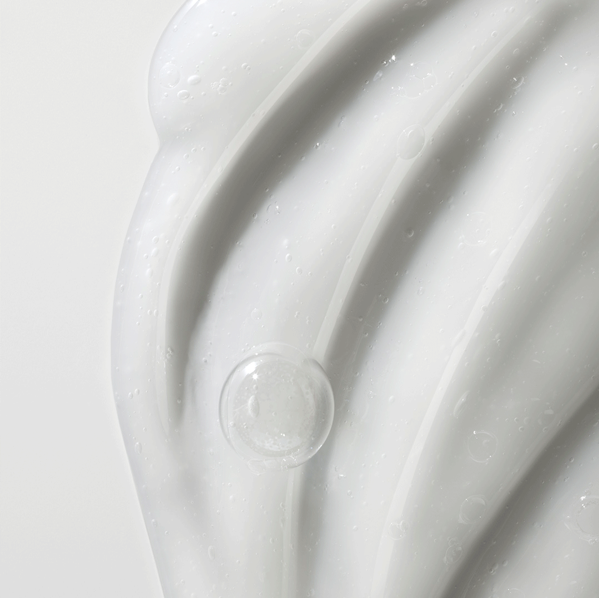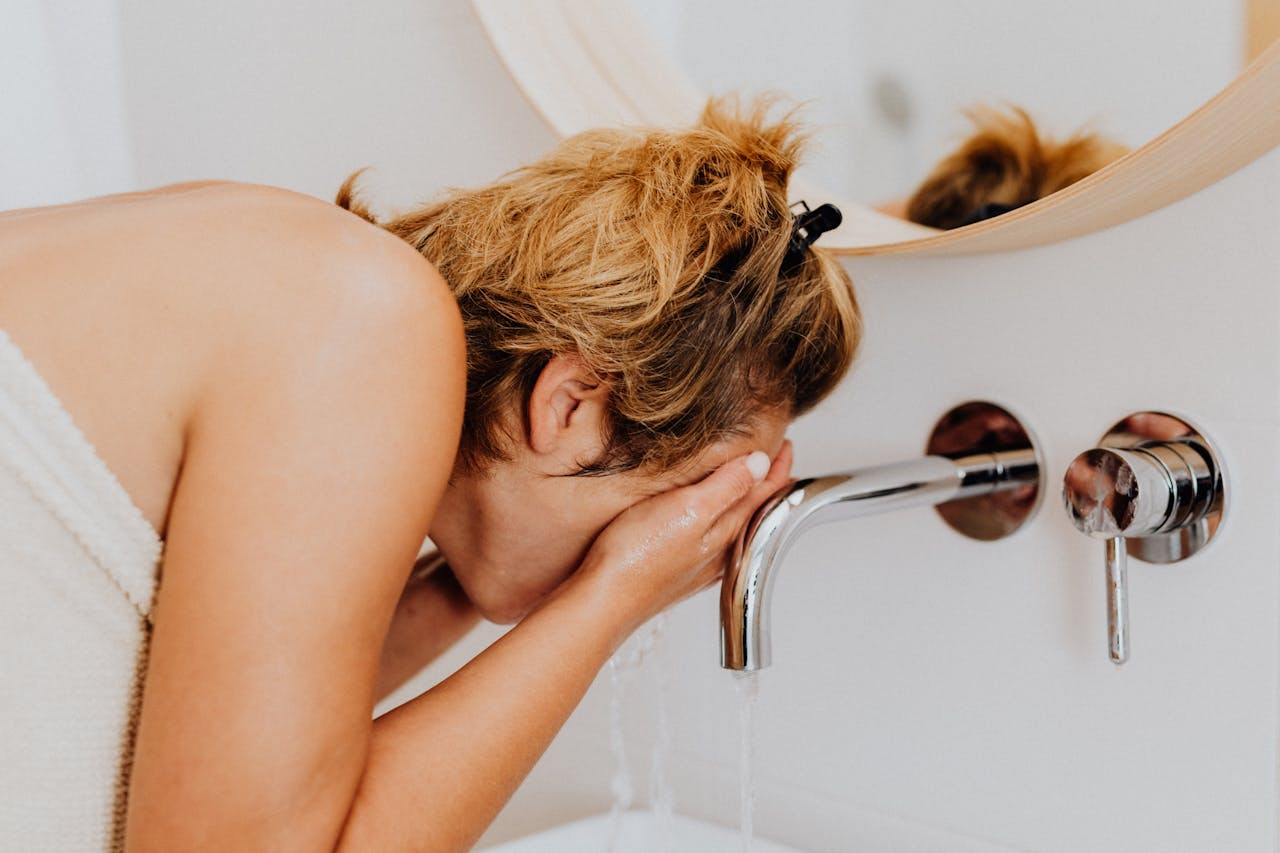Is your skin feeling dry, flaky or like you can barely smile without your skin feeling stretched? If this is you, it’s a sign your skin barrier might be a bit out of whack.
Various modern life factors, like stress or going overboard with active skincare ingredients can mess with your skin’s delicate balance. But don’t worry, a little love and a simpler routine can get your glow back in no time.

We all know our skin is a dynamic, living organ that acts as our body’s primary shield against the outside world. But here’s the thing: not many of us know that our skin barrier is super-important. This delicate yet vital structure plays a crucial role in maintaining skin health and appearance.
Let’s break down the science behind how to keep your skin barrier strong so that you can achieve dreamy, radiant and – most importantly – resilient skin.
What is the skin barrier?
To truly understand the complexities of your skin, we need delve into its intricate structure, which is made up of three distinct and equally important layers:
1. The subcutaneous layer
This innermost layer, composed primarily of fat, provides insulation, cushioning and energy storage.
2. The dermis
Next up is the dermis, a supportive layer that houses vital components like collagen and elastin, responsible for your skin’s firmness and elasticity.
3. The epidermis
This outermost layer, a delicate yet resilient shield, is where you’ll find the marvel of biological engineering that is the skin barrier. Known as the stratum corneum, this upper layer is key to maintaining healthy, radiant skin.
While each layer of your skin plays a crucial role, the epidermis (specifically its stratum corneum) is the frontline defender: the guardian of your skin’s health and beauty. Essentially, your skin barrier acts like a carefully constructed wall. Skin cells form the bricks, while lipids like ceramides, cholesterol and fatty acids act as the mortar binding everything together.
Think of this intricate structure as a two-way gatekeeper: it prevents essential moisture from getting out, while stopping environmental aggressors like pollutants, irritants and bacteria from getting in. Clever, right? When functioning at its best, the skin barrier maintains hydration, plumpness and overall skin health.
How to know if your skin barrier is damaged
Wondering how to know if your skin barrier is damaged? A compromised skin barrier can lead to a range of noticeable niggles. Your skin might feel persistently dry, tight and rough, often accompanied by flakiness or even peeling. Sensitivity and irritation become commonplace, with redness, stinging or burning sensations arising even from products your skin once tolerated.
Inflammation may increase, leading to breakouts, eczema flare-ups or rosacea (read more about how to treat rosacea here [link to article on rosacea]). You might even notice that your skin seems more susceptible to sunburn.

These issues can stem from a variety of sources. Harsh skincare products, especially those that over-exfoliate or contain strong detergents and alcohol, can strip away the skin’s essential lipids.
Environmental factors like pollution, UV radiation and extreme weather can also take a toll. Lifestyle choices play a role, too: stress, lack of sleep, a poor diet and smoking can all contribute to skin barrier dysfunction.
How to repair skin barrier: key ingredients
The good news is that you can take proactive steps to learn how to repair your skin barrier and strengthen it. Look for dermatologist-approved skincare products containing key ingredients like:
- Ceramides: the building blocks of a healthy barrier
- Fatty acids: which help maintain structural integrity and prevent moisture loss
- Hyaluronic acid: a powerful emollient that draws moisture from the environment and locks it into your skin.
If you want to get super-granular, maintaining the delicate pH balance of your skin is another crucial factor in preserving a healthy barrier. Your skin’s acid mantle, a protective film on the surface, thrives in a slightly acidic environment, ideally around a pH of 4.7. However, many skincare products can disrupt this balance with pH levels ranging from highly acidic to alkaline.
Opt for cleansers with a pH between 4.0 and 5.0 to support your skin’s natural acidity. This helps safeguard against various concerns, including dermatitis, acne and fungal infections. Not all brands disclose their product’s pH, but you can prioritize those that openly talk about respecting your skin’s delicate equilibrium.
Simplify your skincare routine
If you’re not into geeking out about specific ingredients and pH levels, just focus on simplifying your skincare routine. Minimize the steps, reduce the number of products you use and choose gentle, natural ingredients to give your skin a little down time. Let’s break it down:
1. Cleanse
Opt for mild, sulfate-free cleansers that won’t strip your skin of natural oils, like this soothing, soap-free cleanser from Revision. With a rich, velvety foam that comforts and moisturizes all skin types, your skin will be left feeling smooth and soft.
2. Moisturize
Moisturize diligently both morning and night to hydrate and protect. We’re huge fans of SkinMedica’s Dermal Repair Cream, a gentle moisturizer rich in vitamin C, vitamin E and hyaluronic acid.
3. Protect
Sun protection is non-negotiable: wear a broad-spectrum sunscreen with an SPF of 30 or higher daily, regardless of the weather. Backed by science and a deep medical heritage, EltaMD offers a line of superior sun protection formulas, designed with maximum efficacy in mind.
Exfoliate with caution
When it comes to exfoliation, a personalized approach is key. Opt for alpha hydroxy acids (AHAs) like glycolic or lactic acid, which can help improve skin texture without causing excessive dryness or irritation. We love SkinMedica AHA/BHA Exfoliating Cleanser, which reduces the appearance of wrinkles and enhances skin texture.
Generally, it’s wise to avoid over-exfoliating, limiting it to once or twice a week with gentle methods. And always listen to your skin – if a product causes irritation, stop using it immediately. If you’re unsure about a product, you can always get in touch with one of our dermatologists: we’re here to help. Take our Skin Quiz so we can connect you with the right specialist.
Lifestyle factors that impact skin barrier health
Remember your skin reflects your overall health. Prioritize hydration by drinking plenty of water throughout the day. Nourish your body with a balanced diet rich in fruits, vegetables and healthy fats.
Manage stress through relaxation techniques like yoga or meditation. Aim for seven to nine hours of quality sleep each night. And finally, minimize your exposure to irritants by avoiding harsh chemicals, fragrances and dyes in both your skincare and household products.
How long does it take to repair skin barrier?
While the time it takes to repair your skin barrier varies depending on the extent of the damage, consistent implementation of these strategies will promote healing and strengthen your skin’s natural defenses.
Repairing your skin barrier is an investment in your skin’s long-term health and beauty. By embracing these strategies, you can revitalize your skin, reduce sensitivity and enhance its natural radiance.
Revitalize your skin: take action today
To start your journey to healthier skin, explore our range of gentle, barrier-repairing skincare products, take our Skincare Quiz to build a personalized skincare routine or schedule a consultation with one of our skincare experts.
We’ve got an awesome community here, and we’d love for you to be a part of it! Drop your thoughts and questions below – let’s chat!
Lighthouse is here for you if you’re struggling with a damaged skin barrier. Discover expert-led and science-backed beauty here.
Reviewed by Dr. Katharine Saussy, MD, FAAD (@drsaussy)









